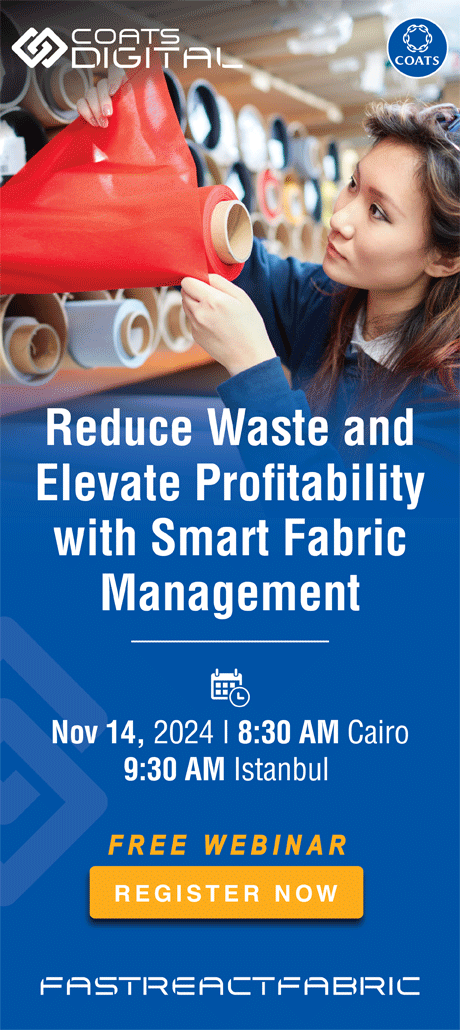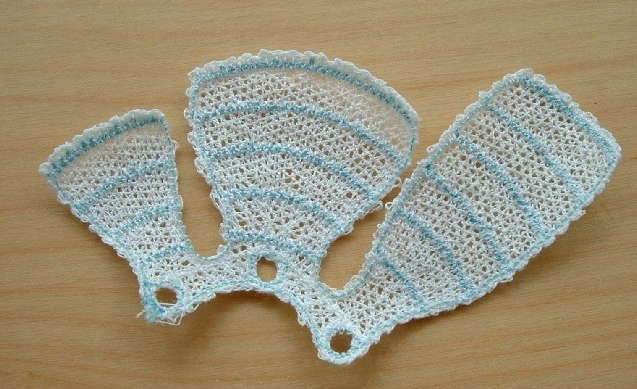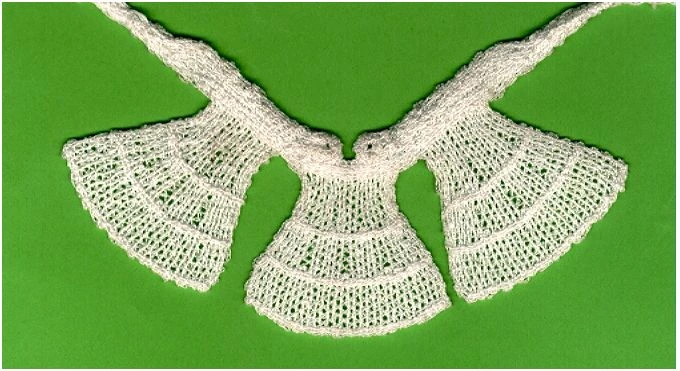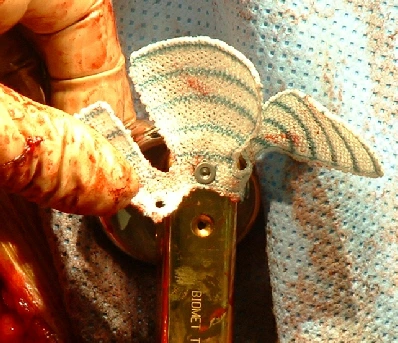In this interview with Julian Ellis OBE, a distinguished expert in textile technology and the founder of Ellis Development Limited, we delve into the world of textile-based solutions for engineering and surgical challenges. Julian’s journey began with a vision to simplify the lives of surgeons and engineers by leveraging textile technology skills. At Ellis Developments, the focus lies in design and development, with manufacturing outsourced.
Ellis Developments always had the intention of using textile technology skills to make the life of surgeons and engineers easier, by providing effective textile solutions. We concentrate on design and development rather than manufacture, and contract out manufacture in quantity. We have remained small, with normally just two of us: Peter Butcher and I, with some clerical assistance.
What inspired you to specialize in textile-based solutions for engineering and surgical problems?
I was working for a company who specialised in narrow fabrics. I received a phone call one day to ask to produce a special fabric for a research project on knee ligaments. The research was successful, but my employers did not want to take the liability of producing a medical product. This led to setting up a business for the design and development of surgical implants.
I have always been interested in the technical applications of textiles, and the move into engineering applications was straightforward following a number of enquiries for development work.
Can you share some specific examples of recent or notable projects where textile innovations played a crucial role in solving engineering challenges?
Our company has worked on many engineering challenges, mainly for aerospace applications: developing designs with optimum fibre architecture to save weight. These mainly involve the use of carbon fibre placed using embroidery techniques.
One benefit of embroidery is that holes can be reinforced with fibres being placed around the hole to spread the load; such placement may be radial and/or circumferential. Woven or knitted structures do not allow for this and so holes can become distorted or damaged. Embroidery is an ideal approach since the fibre between any two stitches can be placed in any direction.
One particular challenge was to save weight by strengthening the air intake above the head of the driver of a F1 racing car, by through stitching 16 layers of fabric already impregnated with uncured resin. The stickiness of the layers presented problems we managed to solve: it is rather tricky to sew through what is effectively glue.
One of the benefits of not having manufacturing equipment ourselves is flexibility in finding solutions.
When you have many looms, you tend to think only of woven fabrics as the answer; if knitting machines, knitting. If you can approach any company to make for you, all textile approaches are available and can be utilised.
In the context of surgical solutions, could you explain how textiles are being used to address medical needs, and what advancements have you contributed to in this field?
The human body has many soft tissues which sometimes fail, particularly ligaments, which run between bones, and tendons which connect muscles to bone. There is a need to make products which are accepted by the body and last for a very long time.
We developed embroidery techniques so we could respond to these challenges rapidly, with just a single head machine for proving designs. We could deliver new prototypes and designs to our designated manufacturer within 24 hours. One product we developed as a multidisciplinary team was a liner for arteries at risk of bursting, particularly abdominal aortic aneurysms. The device, which is custom made for each patient, is straightforward to apply and has saved many lives.
Our most well-known product is a device which was made for a specific patient who had had a cancerous tumour removed from his shoulder two years previously. The surgeon wished to rebuild his shoulder, but did not know what to expect when he started the reconstruction work in the operating theatre. He therefore wanted a device which would screw or stitch to any bone or soft tissue which had regrown.
Ideally it should have any surplus fabric not needed to rebuild the shoulder removable before completing the surgery. My colleague Peter Butcher designed a device which fitted around a metal artificial shoulder and had textile bars running radially from the metal device in all directions, but unneeded fabric could be cut away without the device fraying. It had many reinforce holes and attachment points for stitching. It is made by embroidering polyester surgical stitching thread of polyester.
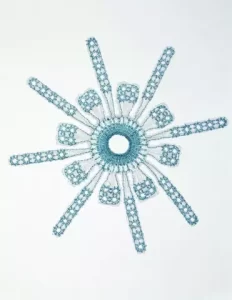
Ellis Developments also offers expert witness services in textile disciplines. How do you ensure impartiality and expertise in this role, and what types of cases do you typically handle?
Because of the shortage of independent textile technologists in the UK, I was in demand as an expert witness for many years and enjoyed writing specialist reports and also giving evidence in court. Running a small specialist company means that there are very unlikely to be conflicts of interest in litigation or criminal cases. I found that the benefit of doing expert witness work is that it fits in very well with research and development. Our part of research projects often has quite wide time spaces while other collaborators are working on one of their allotted tasks and one is waiting for the results before the next section allocated to you can be worked on.
A quiet objective of many experts is to make barristers feel foolish during cross examination. A simple example of this was when I was asked to price or give the value of a rack of clothing which had been stolen. During my evidence, I explained to the court that a male purchaser, if he wanted for example a blue T-shirt, but didn’t find it on that rack he will probably go somewhere else. I was then asked how women think. I said “I have absolutely no understanding at all of how women think” The jury laughed, the judge laughed, defending barrister laughed. Everybody except the prosecution’s barrister for asking such a badly thought-out question.
I have given evidence in a number of high-profile murder cases, rapes, arson and also some very interesting civil disputes including patent cases. Of course, victims and perpetrators of crime are normally clothed, so the examination of garments associated with the incident can give valuable clues. Forensic companies often don’t have the necessary skills, since they tend to concentrate on fibre analysis, DNA and fingerprints.
Expert witness cases can be fascinating, but, of course, one needs to be independent, which I was. I got involved in many straightforward commercial disputes, but the criminal cases were usually the really interesting ones.
I think the case I’m most proud of was that of John Paul Burnett. He was a simple soul, who had previous convictions for petty sexual offences. Out of character was his conviction for rape, which led to a life sentence.
He’d always protested his innocence, but after 14 years, the woman who had complained of him raping her made another allegation against somebody, but the police did not believe her because of serious inconsistencies in her story.
Fortunately, somebody remembered John Burnett, and his case was re-examined, and I was asked to review the evidence by the Criminal Cases Review Board. When I went to see the forensic scientist, I asked him if he remembered the case. He said, “Very much – the judge criticised my lack of confidence in what little forensic evidence there was”.
When reading all the statements in the case, the complainant had said he was wearing workman’s overalls and whipped out his “equipment” to do the deed while he pinned her against a garage door. Now anybody who has seen workmen in a urinal knows that they must slip the top part of the overalls down below their waist. This essential action had been not been mentioned by the complainant and was also missed in the examination of the evidence at the time of his trial. This crucial piece of information was considerable help in obtaining his exoneration and release.
Rape cases and assaults are often the most interesting, because there are usually two sides of the story available from the participants, so you have more personal involvement somehow in the written evidence.
One victim of rape said the perpetrator had ripped her trousers. He claimed that she had torn them on a hook stepping down into his boat. It was easy to see that the tear started from the higher end, whereas if she had stepped down onto the hook, the tear would have started at the bottom. My belief in her story was confirmed when I later learned that it was his second or third rape or attempted rape charge. I never learned how long his sentence was.
In a notorious case on the south coast, the victim was strangled with a pair of tights, and later her body had petrol poured over it and set on fire. I had to run tests to prove that the tights hadn’t tightened up during the fire giving the appearance of strangulation. The use of a home-made flesh simulant is useful in such cases.
I have worked on very many legal disputes and criminal cases. On commercial work many of the cases relate to quality questions, and an independent skilled textile technologist can analyse the problem carefully and provide a clear answer which may help settle the dispute one way or the other, hopefully without resort to the courts.
Independent consultancy and contract research are important facets of your services. What are some key areas where organizations seek your guidance and expertise?
When running a business it is often difficult to see the business as objectively as an outsider coming to look at problems. Sometimes a simple solution can be found as an outsider. One example was a narrow fabric weaving company who were having trouble making their fabrics at exactly the right width. I spotted that the weavers were not checking the width of fabric coming from the looms, and issued each of them with a precision metal ruler. The problem was solved.
Contract research and development come about from companies thinking we might be able to solve their problems, often weight related, by designing fabrics with optimised fabric architecture to be highly efficient from an engineering aspect, so they contain as little fibre as possible and are of minimum weight. Using embroidered structures can achieve this, which is why we have done much to concentrate on this area. Weight saving is crucial for aerospace applications.
What are the main challenges and opportunities in the textile industry today, particularly in the context of sustainable and eco-friendly materials?
When asked about the challenges for textiles in the future, I have one answer: the textile industry will always face challenges: that is how progress is made. The great opportunities are presented by technical textiles, defined as textiles where performance is more important than appearance. There are a host of applications to be discovered, and solutions found to those challenges.
They are almost always niche applications, so we don’t often hear about them, because of the threat of competitors joining a relatively small field. It must also be remembered that technical developments of products can take a long time before coming to fruition. In companies dominated by accountants demanding quick returns on investment, technical developments often fail in this direction as company policies do not have the patience to allow the product to mature. Innovations in aerospace can take ten years, but the potential volumes and profit make waiting worthwhile.
The selection of materials for technical applications depends entirely on the application itself. For surgery, it is usual that the patient needs the implant for the rest of their life: durable materials are essential. More sustainable materials are particularly important for products with a limited life, clothing being the most important area: this alone provides challenges to designers and those who source the raw materials. Information about the source of some products helps, and those working in the industry have a responsibility to keep themselves well informed about the raw materials they use, and the latest technology for production, including recycling.
Can you share any plans or developments that Ellis Developments is currently working on or excited about?
We are currently working on a solution to the difficult surgical repair of severely damaged bones caused through high energy impacts, such as car crashes.
I have had a happy and successful career arising from a deep interest in textiles. As I move into retirement, there are plans to hand over the business to a younger skilled textile technologist, who I hope will be as happy as I have been.
For businesses or individuals interested in exploring textile-based solutions, what advice or insights can you offer to help them get started and make informed decisions?
For individuals, my advice is simply to work hard to increase your knowledge of textiles to build expertise and for a company to use experts.


